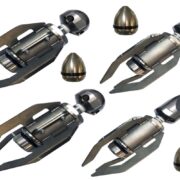Every person wants nothing but the best for their house – from exquisite decoration, modern appliances, to a fully-functional water supply. Unfortunately, the complaints of water clogging are rising nowadays. Some people think that current infrastructure is not adjusting with conventional plumbing, while others believe the water tank is at fault. Either way, your home’s water supply is getting affected, meaning you have to consider fixing this problem.
Waterlogging in pressure tanks is a common problem. The confined space in a tank is creating an inadequate ratio of water and air inside. Sometimes, the water is less than air, leading to clogging in the faucets. When the proportion of water is high, the pressure fluctuates rapidly and causes the pump to turn off. After all, the water is incompressible.
There are two ways to solve this problem. You can either drain all the water from the tank by opening all the faucets and checking air pressure. You can use a tire gauge and see if the pressure is below or above 30psi. Once there is no water, the air will clear out eventually, but is it worth wasting all the water? On the other hand, you can air charge a pressure tank to balance the water and air proportion. Although it is not a perpetual solution and you might have to add air weekly, it is way better than wasting water.
Are you wondering how to charge a well pressure tank without wasting water? Here is a six-step guide to take you through the entire process.
Table of Contents
Step 1 – Adjust Pressure Settings
First of all, familiarize yourself with the primary things, meaning you should know how the tank operates. Learn how to cut in and out the pressure settings. You can determine this by running the tank’s water while keeping an eye on the pressure gauge. As soon as the pumping system turns on, you can cut in the pressure, and when it turns off, you can cut out the water pressure. The standard settings are 20-40 or 40-60, but you have to judge by the force. If you need 2lbs air to balance the proportion, pick the 40-60 pressure for charging the tank. Be careful with the setting as it lays the foundation for the entire procedure.
Step 2 – Turn Off Power
Water and electric wires never go hand-in-hand. Instead of leaving yourself at the threat of electric shocks, mind turning off the power before you dig into the process any further. You have to switch off the disconnect box to the water system. If you can’t find this box, try locating the electric box. You can turn off the breaker inside the electrical service as it cuts the electricity supply of the house temporarily. It ensures a safe charging procedure while letting you maintain a smooth water supply in the house.
Step 3 – Evacuate Water Conditioning Equipment
Unsurprisingly, every home has a water softener – filtration system. It removes the hard-causing minerals and debris from water through ion exchange. At times, this is the reason why scales build up in the pipes and cause water clogging. At the time of charging the pressure tank, you have to unplug the equipment and keep it aside. It prevents clogging up the conditioning units with sediments, making sure the water conditioning systems work fine after air charging.
Step 4 – Open Faucets
As the water is exceeding the air pressure, consider opening the faucet on the laundry tub. You can also open faucets at any other place that doesn’t have a screen. Start running the water until the pressure drops down to zero. You can apply a small amount of psi with the air compressor. It will allow you to snifter the value by evacuating the extra water from the pressure tank to maintain a balance. Once there is an equal proportion of water in the tank, you can turn off the faucet and jump to the next step.
Step 5 – Start Pumping Air
It is time to re-pressurize the water tank by inserting air into it. Begin pumping air into the tank with a compressor’s help and continue pumping the air until the water tank feels empty. You can shut off the main valve of plumbing to ensure there is no water coming from any other pipe. Keep pumping the air until the tank has approximately 25 pounds of air pressure in the tank. You can set this limit on the compressor and unplug when it is complete. It will air charge the pressure tank, ensuring enough water pressure to overcome all clogging problems.
Step 6 – Open Plumbing Wall & Run Water
Once the air charging process is complete, turn off the faucets. Switch on the power and allow the pumping system to cut out the pressure. It might take 5-10 minutes, but you have to wait until the system gets turned off. Open the main plumbing wall and start running water from any faucet. You will come across sediments and debris, but you have to keep running water until it is clear. Put the water conditioning back and enjoy a smooth water supply in the house.
Final Thoughts:
Waterlogging and clogging problems can create a lot of chaos in the house. You might come across dripping faucets, inadequate water supply, or no water supply at all despite a full tank full of water. Before bugging a plumber, assess your tank to determine water and air pressure since this is the root cause of many problems. Fortunately, you can readily fix this issue by air charging the pressure tank to overcome water clogging.













Comments